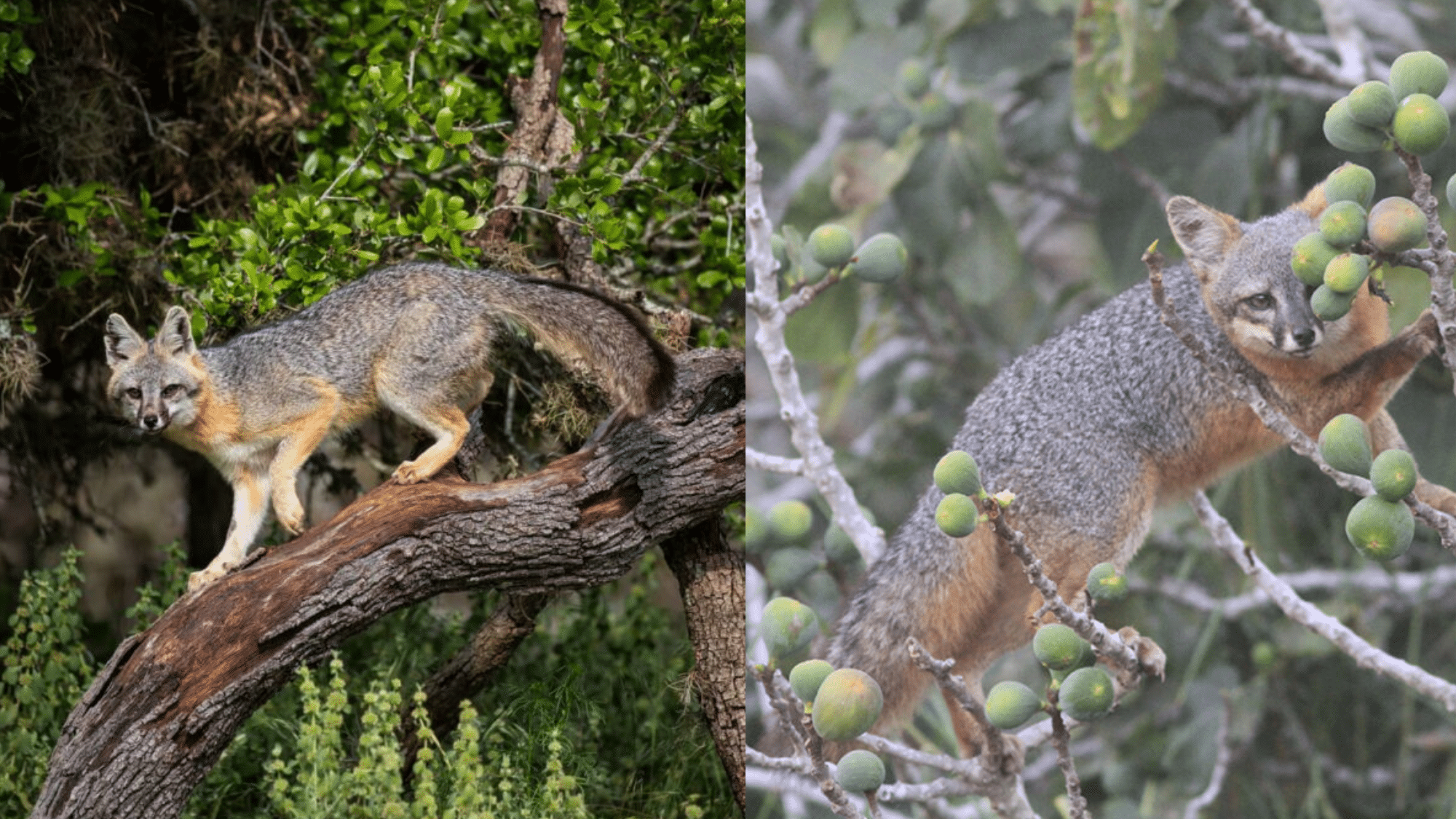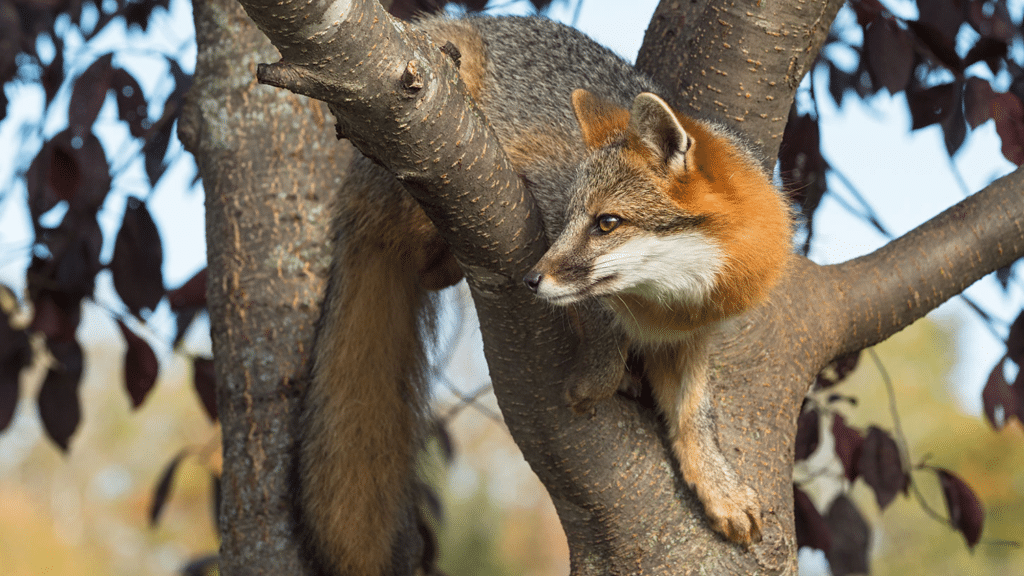Ever seen a fox and wondered if it could climb a tree like a cat?
You’re not alone. Most people think foxes stick to the ground, but that’s not always true.
While red foxes are strictly ground-bound, there’s one clever climber in the fox family that breaks the mold: the gray fox.
Let’s take a closer look at which foxes can scale tree trunks, what makes them good at it, and the wild reasons they do it in the first place.
Can Foxes Really Climb Trees?
Short answer: Yes, but only some of them.
Gray foxes are one of the few fox species that can climb trees, and they’re among the only canines in North America with this impressive skill.
Thanks to their curved claws, strong hind legs, and flexible ankles, they can scale tree trunks and even leap from branch to branch like it’s second nature.
Red foxes, on the other hand, don’t have these tools. They’re fast, smart, and great at jumping fences or logs, but vertical climbs are beyond their abilities.
So, if you ever spot a fox high in the treetops, odds are it’s a gray fox.
Foxes With Climbing Skills

Not all foxes can climb, but a couple of unique ones stand out for their tree-scaling abilities.
Gray Fox
Gray foxes are strong, coordinated, and built for the climb. Their flexible ankle joints rotate more than most mammals’, helping them grip bark and move through branches like squirrels. These features make them one of the rare tree-climbing members of the dog family.
| Trait | Details |
|---|---|
| Tree Climbing | Excellent; can reach up to 60 feet high. |
| Movement Style | Flexible joints and sharp claws aid silent, agile climbing. |
| Preferred Terrain | Wooded areas in North and Central America. |
| Coloring | Gray, black, and reddish fur that blends with the forest floor. |
Channel Island Fox
Much smaller and less agile than the gray fox, the Channel Island fox can still climb, but it does so mainly for food, not escape.
| Trait | Details |
|---|---|
| Tree Use | Capable but not as skilled as gray foxes. |
| Size | Tiny, about the size of a house cat. |
| Habitat | Found only on California’s Channel Islands. |
| Purpose of Climbing | Reaches food sources like eggs, fruit, and nesting birds. |
Why Do Foxes Climb Trees?
Foxes don’t climb for fun; there’s purpose behind the paws.
First, it helps them escape from danger. When wolves, coyotes, or hunting dogs chase them, gray foxes head for the trees where their bigger enemies can’t follow.
Trees are also perfect places for finding food. Bird eggs, baby birds, and small mammals hidden in trees make easy meals for hungry foxes.
Sometimes, foxes need a quiet place to rest. A high branch offers safety from larger animals and gives them peace far from the busy ground below.
From up high, they can also keep an eye on what’s happening around them, spotting both danger and their next meal.
Fun Facts About Tree-Climbing Foxes
Here are some wild (and clever) facts that show just how unique these foxes really are:
- Can descend head-first: Thanks to their rotating ankles, gray foxes can come down trees like squirrels.
- Leave claw marks: Look for scratch marks on tree bark as signs of recent activity.
- Silent hunters: They climb quietly, keeping hidden from prey and predators alike.
- Use fallen logs as ramps: To make climbing easier, they may start with a slanted trunk.
- Prefer early and late hours: Most active in trees at dawn or dusk when it’s cooler.
- Rarely climb in open fields: They stick to wooded or brushy areas with better cover.
- Strong sniffers, even in trees: Their sense of smell helps them locate nests and fruit.
- Food stashing: Some gray foxes hide food in tree hollows for future meals.
- Climbing declines with age: Older foxes tend to stay grounded as strength fades.
Wrapping It Up
Foxes might not be the first animals that come to mind when you think of climbing trees, but the gray fox certainly deserves a second look.
With unique joints, stealthy movement, and smart survival instincts, these foxes show that nature has some amazing surprises.
So next time you’re in the woods and hear a rustle above you, it might not be a squirrel.
It might just be a fox.















